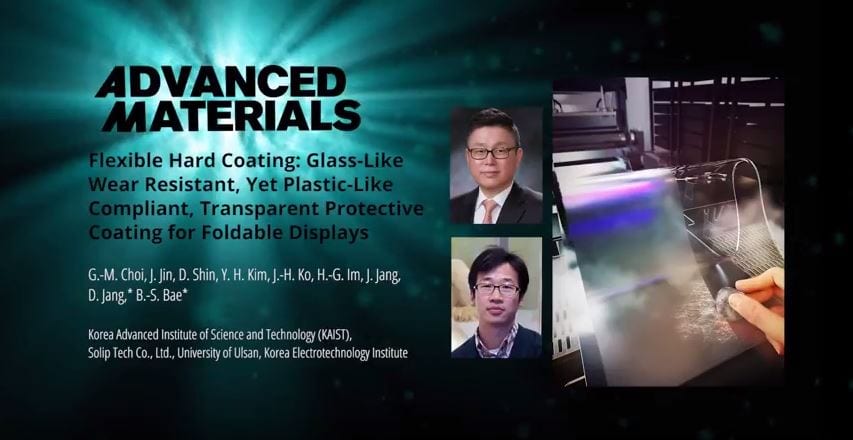Foldable smartphones are central to the next generation of display devices. Current cover windows for cell phones are made of silicate glass, and although glass offers the promise of high strength and scratch-resistance, it is too brittle and rigid to be used alone in a flexible display. Therefore, the commercialization of foldable displays relies on the innovation of a transparent material having glass-like hardness combined with plastic-like flexibility—a seemingly contradictory feat.
In a recent communication in Advanced Materials, Byeong-Soo Bae, Dongchan Jang, and co-workers from Korea Advanced Institute of Science and Technology and Solip Tech Co., Ltd. report a nanocomposite merging the best of both worlds.
Their flexible hybrid material consists of an inorganic component—siloxane—covalently bound to organic epoxy groups. They prepared the epoxy-siloxane molecular hybrid by UV-initiated cationic ring-opening polymerization of epoxy-functionalized oligosiloxanes, achieving up to 95% conversion of the epoxy groups. The resulting material is transparent and exhibits nanometer-scale hybridization, where the organic and inorganic phases are indistinguishable. Its mechanical properties, including elastic recovery and hardness, were superior compared to reference materials tested by the researchers.
In situ bending experiments were conducted by applying monotonic or cyclic loadings and the process was monitored by scanning electron microscopy. Near-linear elastic behavior was observed over the full course of the monotonic loading cycle. For the cyclic loading experiment, 15 cycles of loading and unloading were performed. After the final cycle, a deflection of only about 150 nm occurred, indicating that the material has significant elastic recoverability.
After fabricating a PET film with the hybrid material, the researchers evaluated its performance as a hard coating. Impressively, the film did not permanently deform or fracture after more than 10,000 folding cycles, had a high surface pencil hardness of 9H, and outstanding wear resistance, which was indicated by an abrasion test.
The authors have demonstrated a transparent epoxy-siloxane molecular hybrid material with a plastic-like low Young’s modulus, glass-like high strength, and high level of resilience. This hybrid material is unprecedented and well-suited for use as hard coatings in flexible, foldable optoelectronics.
To find out more, please visit the Advanced Materials homepage.

















